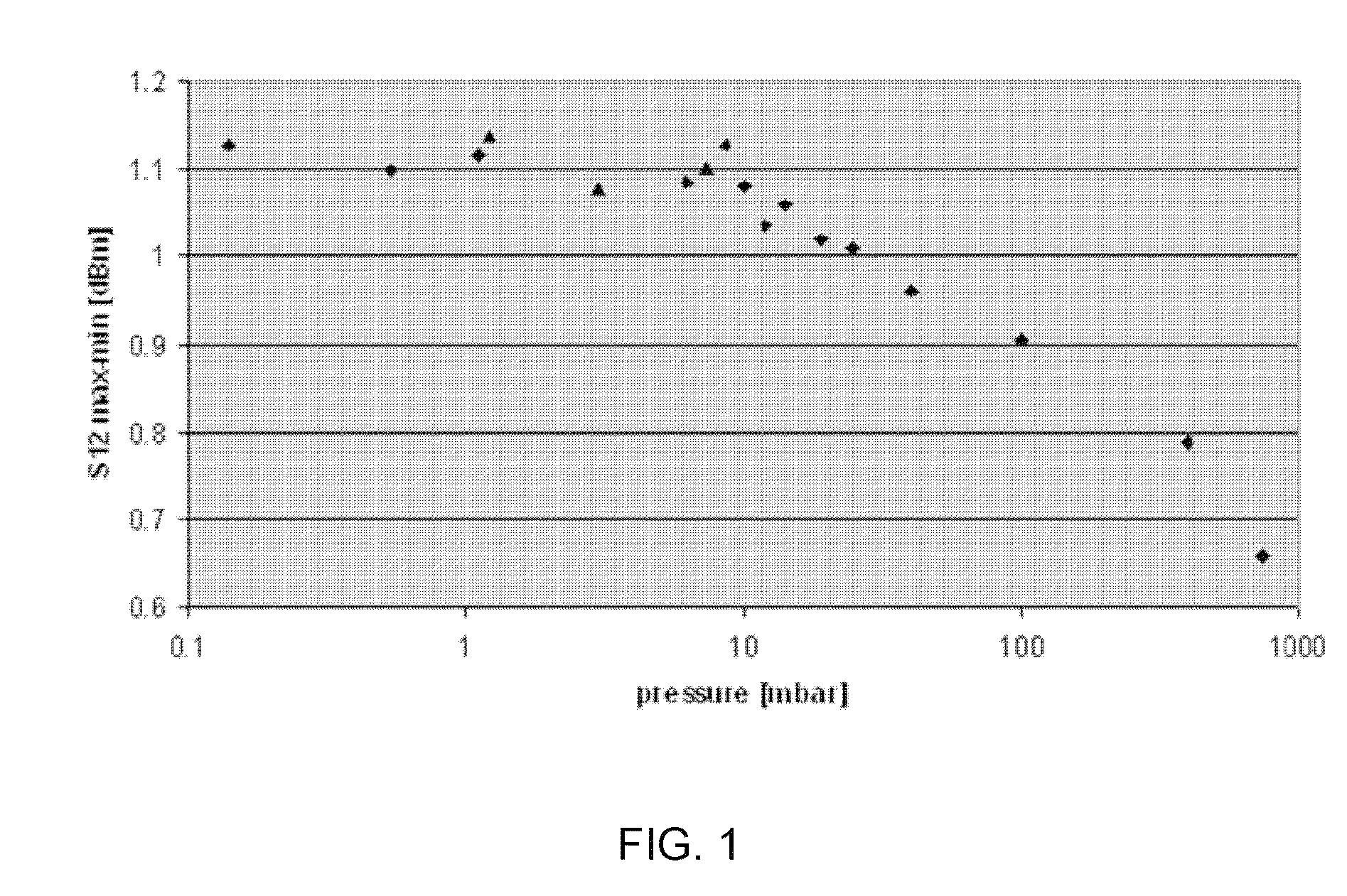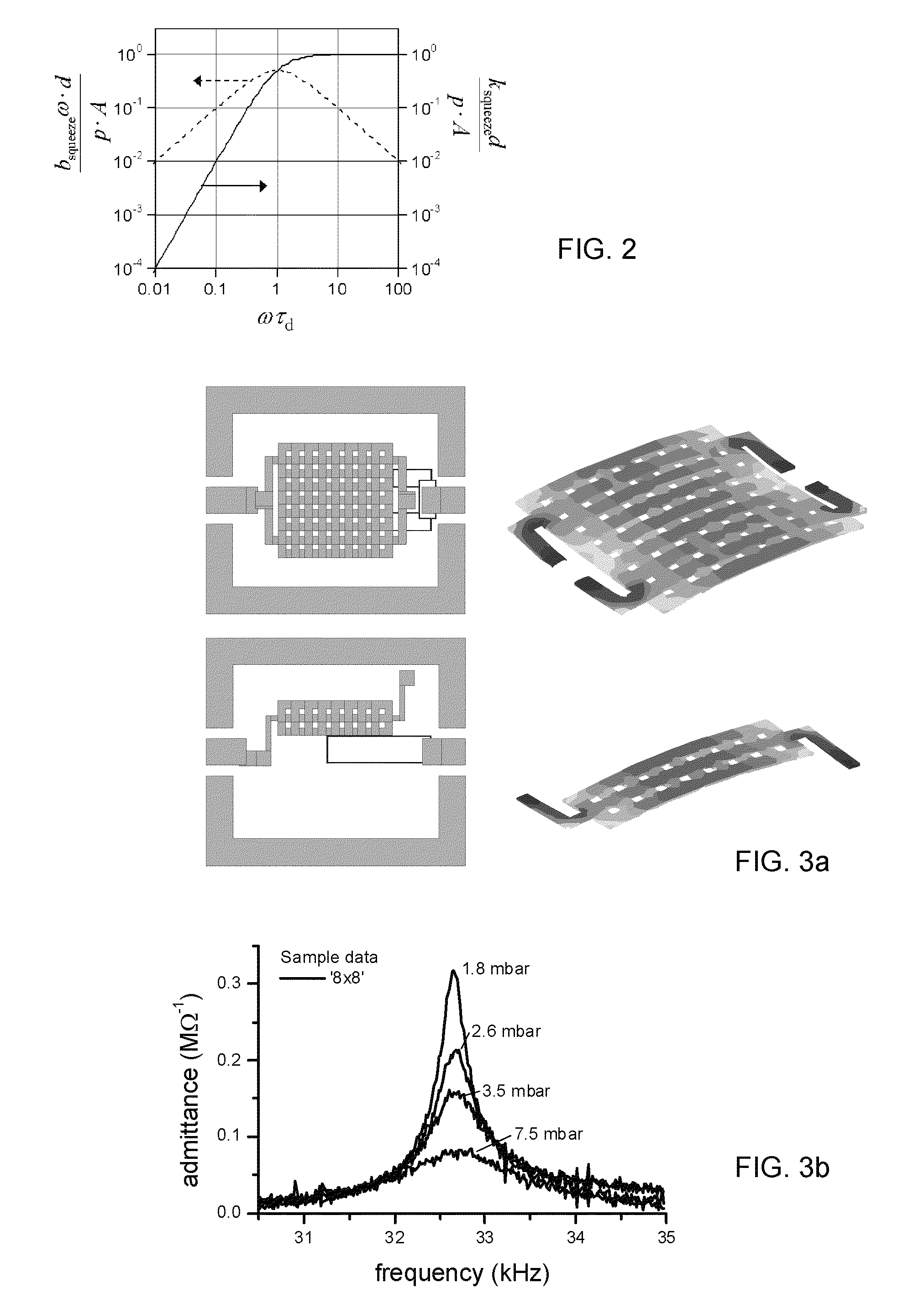MEMS pressure sensor
a pressure sensor and sensor technology, applied in the field of mems pressure sensors, can solve the problems of pressure dependence of the performance of resonant mems devices, easy spoiled vacuum, and sensitivity to gas pressur
- Summary
- Abstract
- Description
- Claims
- Application Information
AI Technical Summary
Benefits of technology
Problems solved by technology
Method used
Image
Examples
Embodiment Construction
[0052]As mentioned above, it has been recognised that monitoring amplitudes or dissipation in a resonator signal can be used to indicate pressure. This invention is based on a different monitoring mechanism which affects the resonance frequency. If the gas film within the resonator structure can not escape fast enough, it will contribute to the spring constant k.
[0053]It can be assumed that the mean free path of the gas molecules is larger than the device dimensions, (i.e. >100 μm), for pressures in the range of 0.1 kPa, namely within the regime of a Knudsen gas, where viscosity is not considered.
[0054]In the equation of motion, Equation (1), the damping coefficient b and spring constant k can be decomposed to a contribution from the (silicon) structure bmat and a contribution due to gas damping bgas.
b=bmat+bgas (6)
k=kmat+kgas (7)
[0055]The damping coefficient bgas and elastic coefficient kgas are given by:
[0056]bgas=(pAτd)11+(ωτ)2(8)kgas=(pAd)(ωτ)21+(ωτ)2(9)
[0057]in ...
PUM
| Property | Measurement | Unit |
|---|---|---|
| pressure | aaaaa | aaaaa |
| area | aaaaa | aaaaa |
| thickness | aaaaa | aaaaa |
Abstract
Description
Claims
Application Information
 Login to View More
Login to View More - R&D
- Intellectual Property
- Life Sciences
- Materials
- Tech Scout
- Unparalleled Data Quality
- Higher Quality Content
- 60% Fewer Hallucinations
Browse by: Latest US Patents, China's latest patents, Technical Efficacy Thesaurus, Application Domain, Technology Topic, Popular Technical Reports.
© 2025 PatSnap. All rights reserved.Legal|Privacy policy|Modern Slavery Act Transparency Statement|Sitemap|About US| Contact US: help@patsnap.com



